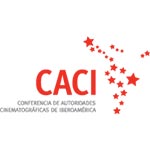 “Nuestro objetivo final es nada menos que lograr la integración del cine latinoamericano.
Así de simple, y así de desmesurado”.
“Nuestro objetivo final es nada menos que lograr la integración del cine latinoamericano.
Así de simple, y así de desmesurado”.
Gabriel García Márquez
Presidente (1927-2014)


-

Fernando Pérez: Preguntas tras el silbidoPor Juan A. García¿Qué piensas de la polémica provocada por tu película?
Me parece muy bueno para la película, y necesario, para mover las ideas. Siempre me viene a la mente —y van a decir, es la respuesta que siempre tiene— y es que creo que quien mejor definió eso fue el realizador norteamericano Nicholas Ray, cuando dijo que en el cine no existe una fórmula para el éxito, sino una para el fracaso: que es tratar de contentar a todo el mundo. No es posible hacerlo y eso lo vemos en muy pocas obras. Y habría que pensar por qué. Pienso que la polémica siempre ha sido la palanca, el motor de mover ideas y ésta es una película que quiere mover ideas y sentimientos. En La vida es silbar siempre se está planteando la posibilidad de elección; los personajes tienen que elegir, y a veces las elecciones no tienen que ser tan radicales.Debutas en la ficción con una película de corte realista, Clandestinos, sin embargo en Madagascar y La vida es silbar parece que renuncias a eso y tiendes hace la metáfora, ¿es intencional? ¿Cómo se ajusta eso a tu carrera anterior?
Pienso que la palabra intencional quizás no exprese el proceso creativo que yo siento después del tiempo que me ha llevado a esta diversidad de estilos; siento que este proceso se va planteando orgánicamente, es como una evolución en la medida en que uno se desarrolla, va llegando por la edad y por la experiencia a alguna madurez en su trabajo y en su profesión, pues eso fluye. Soy de los cineastas que no se adhiere conscientemente a un estilo único y predeterminado. No tengo preferencia por un estilo o un género único de películas. Admiro el cine de Spielberg y me encanta Bergman. Asimismo, admiro las mejores películas de Fellini, y me gustan las de Scorsese y no creo que sean contrarios, es decir, todos se complementan. Me encantaría hacer una película como Taxi Driver, por poner un ejemplo, pero también una como Andrei Rubliov, de Tarkovski.Si fuéramos a hablar de influencias conscientes en tu película, ¿cuáles mencionarías?
Te vas a caer para atrás si te lo digo: tengo, y lo mostré incluso en la pre-filmación a los colaboradores más cercanos para trabajar sobre esa imagen –no con afán de copiarlo, sino como referencia concreta– Ocho y medio, de Fellini. Ahí hay un universo que está muy cercano al que nosotros queremos crear. Estudié muchísimo, después de haberla leído por segunda vez, La cartuja de Parma, de Stendhal, que es una novela asombrosamente cinematográfica, pero, además, una novela absolutamente moderna, donde los géneros se mezclan: pasa del drama, del absurdo, al humor, es algo realmente increíble, y en mi película se manejó mucho eso. Y hay otra película que mientras estaba escribiendo el guión me atrajo muchísimo y dije: Mira, tiene que ver algo con lo que estamos haciendo, me estimuló y me motivó mucho y es Los niños del Paraíso, de Marcel Carné, que crea una realidad artificial deliberadamente teatral, pero una vez que tú entras en ese mundo, los personajes te arrastran y pasas a otra dimensión. Todas esas fueron influencias inmediatas. Ya influencias permanentes: el mejor Subiela, el mejor cine norteamericano (no me pierdo una película de Spielberg)...En el cine cubano hay autores definidos como tú, pero también existe un gran autor que es el fotógrafo Raúl Pérez Ureta, ¿hasta qué punto sabías que podía ser un gran riesgo trabajar con él, que tiene un estilo tan propio, ya mostrado en Madagascar, y que aquí podría reiterar la misma imagen?
¿Cómo se plantearon este riesgo?
Para mí no era un riesgo trabajar con Raúl, para mí era una imperiosa necesidad. Si cuando uno va a dirigir actores el paso fundamental es el casting, y después al seleccionarlos es difícil cambiar, creo que en la selección del fotógrafo yo tenía una sola opción que era Raúl, no solo por la experiencia anterior con Madagascar y la comunicación que mantenemos, sino porque sentía que en la atmósfera que tenía esta película tenía que entrar Raúl para ayudar a crearla. Creo que gran parte de las imágenes fueron creadas por él, y hubo momentos en que le decía: Esta imagen la vas a dirigir tú. Y es que todos los viejos sueños de Raúl, que habíamos discutido, podíamos aplicarlos en esta película. Existen varios planos dirigidos por él. Bromeando con él, me sentaba y le decía: Dirige tú, que ese plano te pertenece. Fernando Pérez: Questions behind the whistle
Fernando Pérez: Questions behind the whistle
By Juan A. García
What do you think about the polemics provoked by your film?
I think it is very good for the film, and necessary to move ideas. I always recall- and people will say I always give the same answer-but I believe the person who best defined that was the American filmmaker Nicholas Ray, when he said that in cinema there is not a formula for success, but there is one for failure: to try to please everybody. It is not possible to achieve that, it happens with very few works. And we should think about the reasons for it. I believe polemics has always been the pull, the drive to move ideas and this is a film that intends to move ideas, and feelings. In La vida es silbar the possibility of choosing is stated all the time; the characters have to choose and sometimes choices do not have to be so radical.
You made your debut in narrative with a film of realistic tendency, Clandestinos, however, in Madagascar and La vida es silbar you seem to renounce that and turn to metaphor. Is that intentional? How does that fit with your previous career?
I think the word intentional probably does not express the creative process that I feel after the time that has taken me to this diversity of styles; I feel it is an organic process; it is like an evolution insofar as our development takes place, due to age and experience, one reaches some maturity in his work and profession, and then it flows. I am the type of filmmaker who does not consciously join up a unique and predetermined style. I do not prefer a unique style or genre of film. I admire Spielberg’s films and I love Bergman. Likewise, I admire Fellini´s best films, and I like Scorsese´s and I do not think they are opponents, I mean, they complement one another. I would love to make a film such as Taxi Driver, just to give an example, but also another one such as Andrei Rubliov, by Tarkovski.
If we were to discuss the conscious influences in your films, which ones would you mention?
You will fall flat on your back if I tell you: I have Ocho y medio, by Fellini; I showed it in the pre-filming phase to my closest collaborators in order to work with that image, not with the intention of copying it, but as a concrete reference. There is a universe there which is very close to the one we intend to create. I studied a lot, after I read it for the second time, La cartuja de Parma, by Stendhal, which is a surprisingly cinematographic novel, but also an absolutely modern novel, where genres are mixed: it goes from drama to absurd, to humour, it is something really incredible, and in my film there was a lot of that. There is another film that called my attention strongly while I was writing the script and I said: look, it has to do with what we are doing, it stimulated and motivated me a lot and it is Los niños del Paraíso, by Marcel Carné, which creates and artificial reality which is deliberately theatrical, but once you enter that world, the characters drag you along and you enter another dimension. Those were immediate influences. Now about permanent influences: the best of Subiela, the best American cinema (I never miss a Spielberg’s film)...
In the Cuban cinema there are distinct authors like you, but there is also a great author who is photographer Raúl Pérez Ureta, to what extend could working with him be a risk? He has such a personal style, already proved in Madagascar; could he possibly reiterate the image? How did you pose that risk?
For me, working with Raúl was not a risk, it was an imperative need. If casting is the fundamental phase when you are going to direct actors, who are difficult to change once you have selected them, in my opinion I had only one choice for the photographer and that was Raúl, not only for the previous experience with Madagascar and the communication between us, but also because I felt that in the atmosphere of this film Raúl had to join in to help us create it. I believe a great number of the images were created by him, and there were moments when I said to him: You are going to direct this image. And it is that all of Raúl´s old dreams, that we had already discussed, could be applied in this film. There are several shots directed by him. As a joke I would tell him: Now you do the direction, that shot is all yours.
















